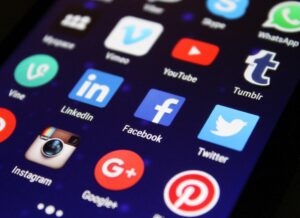Fake news????
Yes, it’s true! It spread like wildfire.
As future or current teachers, we need to make it a priority to teach our students the importance of digital literacy.

Why Teach Digital Literacy in Middle/High School?
After reading the article “Developing critical literacies: What we need to know in a “fake news” world”, I learned that it is no longer appropriate to simply just check the date and author of the article and assume it is real information.
Students must be taught how to:
- Recognize the bias information
- Use reliable fact checking tools such as Snopes, Polilifact, FactCheck.org, Google’s Reverse Images Search, and VerificationHandbook.com.
- Read like a fact checker
- Use real life examples of false stories or images.
- Critical thinking mindset
We need to teach our students how to become critical thinkers, as emphasized in the article “Lessons in critical thinking.” Critical thinking allows students to question what we may be reading or looking at in a more critical perspective.
Lastly, I watched the video “How to choose your news”. Now that we have various levels of news they are all competent creating what we called “fake news”. In todays world it seems as though anyone can be a reporter, which increases the spread of false information.
Here is how we can help students reduce the spread of false news:
- Teach students to find the actual news from the actual reporter on social media rather than seeing the news in articles or videos that have been falsified
- Look at the new information at different parts of the day rather than a few minutes apart. If you continue to find information a few minutes apart the information will be falsified without correct details.
- Separate fact from opinion! THINK/PROBABLY/LIKELY = FAKE
- AVOID anonymous sources
- Always verify news before spreading it
These examples are important to consider when navigating the digital world and knowing if the news is real or fake.
Connections To Subject Areas
- English: Students can analyze media texts, evaluate sources connecting to the big ideas above. For example, having a student fact check an article connects to understanding digital literacy skills.
- Social Studies: digital literacy connects to evaluating historical sources, understanding what is true to false.

Photo by on Pexels
We MUST teach students how to implement and learn all about digital literacy!! With the rise of false information spread around the world, digital literacy is essential.
Do you agree? Why or why not?